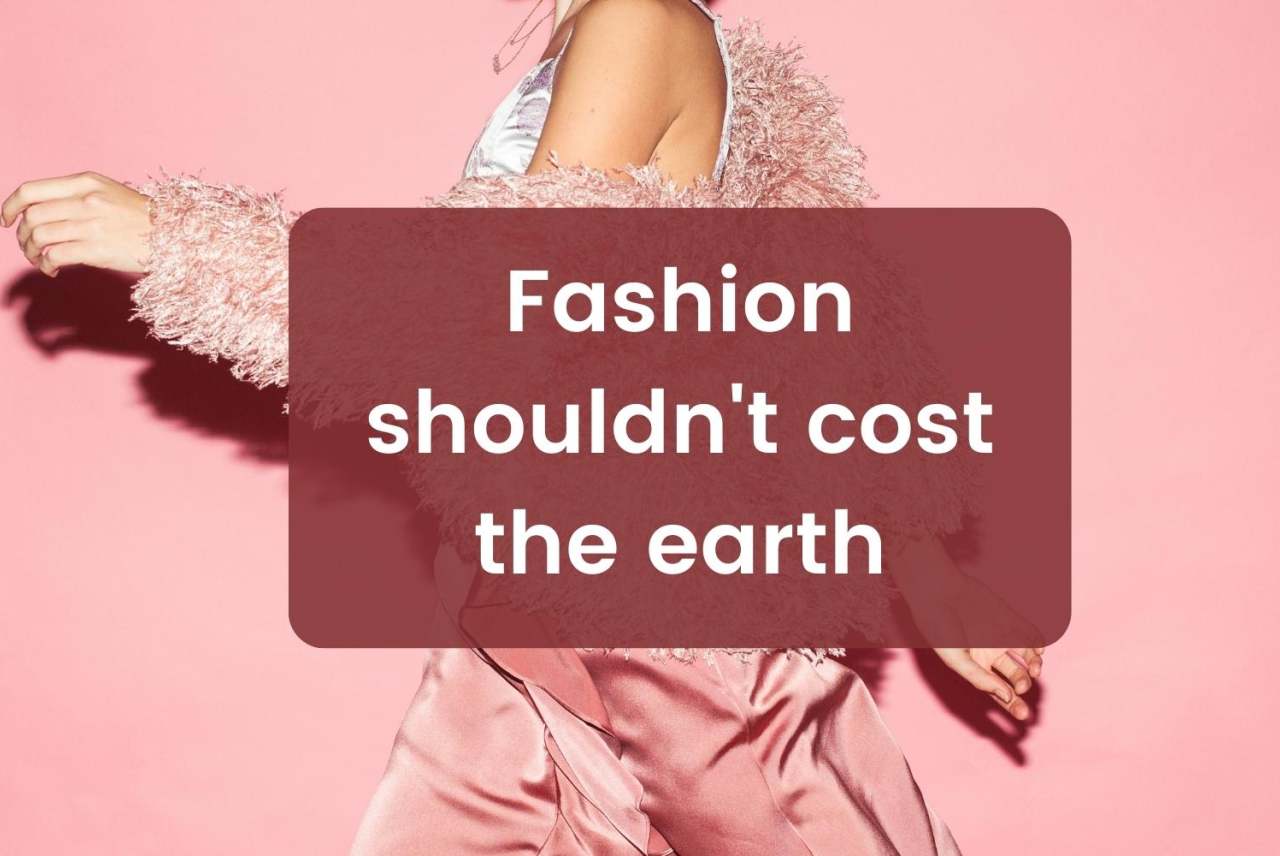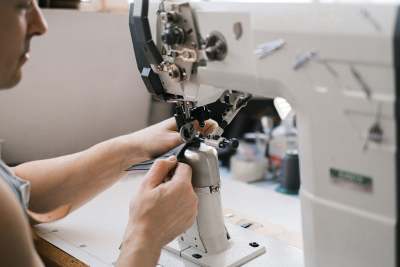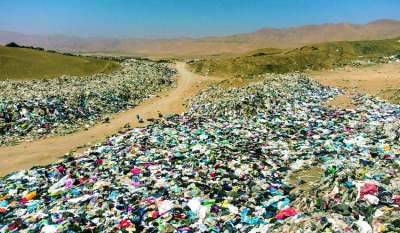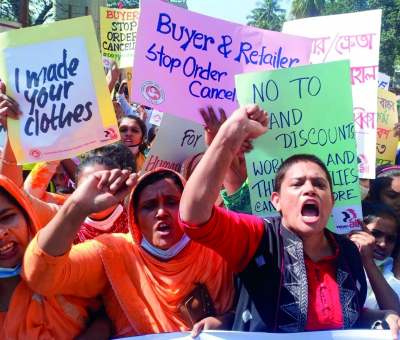The problems with fast fashion
What are the environmental problems with fast fashion?
The endless creation of new clothes comes with a heavy environmental price. Every year the sector requires 93 billion cubic meters of water, which is enough to meet the consumption needs of five million people, and is responsible for around 20% of industrial water pollution as a result of textile treatment and dyeing.
There are also numerous problems with the materials and processes used. For example, cotton production uses 6% of the world’s pesticides and 16% of insecticides.
The industry also has a heavy carbon footprint, which is responsible for up to 10% of total global carbon emissions, more than the total form flying and shipping, and is estimated to increase by 50% by 2030.
The above problems affect the clothing sector more broadly, but one issue is particularly endemic to fast fashion: plastic.
How much plastic do clothes contain?
Not only does fashion heavily rely on fossil fuel for energy to produce their garments and transport them across the world, but a staggering 69% of all textile fibres are derived from fossil fuels, with projections indicating a potential for further expansion in the future.
Polyester is the most widely used of these synthetic fibres and is now found in over half of all textiles produced. It is generally produced from polyethylene terephthalate, better known as PET, a type of plastic derived from crude oil and natural gas – also used to make items such as plastic bottles.
Changing Markets' research found that in 2015, polyester production for textiles alone was responsible for emissions of over 700 million tonnes of carbon dioxide equivalent – similar to the annual GHG emissions of Mexico or 180 coal-fired power plants. This is projected to nearly double by 2030, reaching twice the GHG emissions of Australia.
The ubiquitousness of plastic in clothing means that the textile sector accounts for 15% of total plastic use; the only sectors that use more are construction and packaging.
According to the Ellen MacArthur Foundation, clothes release half a million tonnes of microfibres – the miniscule bits of fabric that are released when clothes are worn, washed, or disposed of, that find their way into our bodies and the natural world - into the ocean every year, equivalent to more than 50 billion plastic bottles.
These fibres have been found almost everywhere: from the summit of Mount Everest to the placentas of unborn babies. We still do not know the effects they may have.
Clothing made of recycled plastics
Many fashion brands are pledging to address the issue of the use of virgin plastics in clothing manufacture, a material derived from the fossil fuel industry. However, this is often by replacing it with recycled synthetics.
Many brands are making a song and dance about using recycled plastics for their clothes, but a recent report by the RSA found that the actual level of recycled content was pitifully low. Across four major online fast fashion brands, the use of recycled fabrics was a mere 4%.
Our analysis of Shein’s website found its recycled content was even lower, at only 0.5%, despite the brand claiming, “When selecting materials, we do our best to source recycled fabric, such as recycled polyester.”
Recycling plastics where possible has some benefits, but it does nothing to address the problem of microfibres.
And this may well be from recycled plastic bottles but, as a 2021 Guardian article points out: “PET bottles are also part of a well-established, closed-loop recycling system, where they can be efficiently recycled at least 10 times. The apparel industry is 'taking from this closed-loop, and moving it into this linear system because most of those clothes won’t be recycled', said Maxine Bédat, Executive Director of New Standard Institute. "Converting plastic from bottles into clothes may actually accelerate its path to the landfill, especially for low-quality, fast-fashion garments which are often discarded after only a few uses.”
The fashion industry, governments and consumers need to act to slow down consumption and ensure that garments are sustainable at every stage of their life cycle, from fibre production, to manufacture, to end-of-life.
How much waste does the clothing industry cause?
With the growing popularity of fast and ultra fast fashion, there comes a growing amount of textile waste.
The amount of textiles being produced globally per person more than doubled from 5.9kg to 13kg over the period 1975-2018.
Many of the clothes bought are thrown away after being worn just a handful of times: the industry produces an estimated 92 million tonnes of textiles waste annually, much of which is burnt or finds its way to landfill, while less than 1% of used clothing is recycled into new garments.
Often textile waste is exported and ends up being dumped in countries such as Ghana and Kenya. The environmental impact of all these garments, often richly laced with industrial chemicals, is severe for local ecosystems when they are dumped in their billions.
Some of this waste consists of new items that never even reached the consumer – clothing lines that have become outdated and so are destroyed instead of sold.










